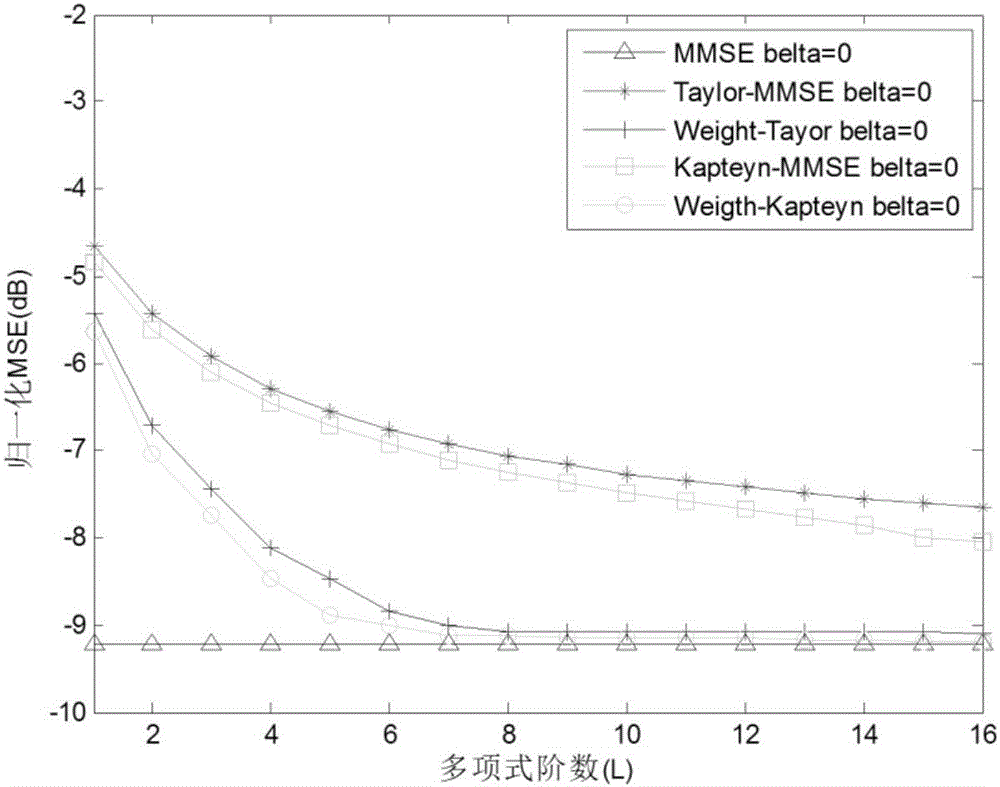Large-scale MIMO low-complexity channel estimation method based on weighted Kapetyn grade number expansion
A technology of channel estimation and series expansion, which is applied in the field of low-complexity channel estimation algorithms, can solve the problems of reducing computational complexity, high complexity, and large estimation error of Kapetyn series expansion, so as to speed up the convergence speed and improve the accuracy Effect
- Summary
- Abstract
- Description
- Claims
- Application Information
AI Technical Summary
Problems solved by technology
Method used
Image
Examples
Embodiment Construction
[0048] The present invention will be further described below in conjunction with the accompanying drawings.
[0049] Concrete steps of the present invention include:
[0050] 1) Let the received signal model be:
[0051] Y=HP+N
[0052] where Y represents the received signal, H represents the MIMO channel matrix under quasi-static flat fading channel conditions, where N r Represents the number of receiving antennas on the base station side, N t represents the number of transmitting antennas, R represents the channel covariance matrix, P represents the pilot signal matrix of the transmitter, N is an additive noise signal that obeys a cyclic symmetric complex Gaussian random distribution.
[0053] To vectorize the received signal, define the form of the pilot matrix as Then the above formula can be transformed into the following vector form:
[0054]
[0055] 2) Using the traditional MMSE channel estimation algorithm, the channel estimation matrix can be derived...
PUM
 Login to View More
Login to View More Abstract
Description
Claims
Application Information
 Login to View More
Login to View More - R&D
- Intellectual Property
- Life Sciences
- Materials
- Tech Scout
- Unparalleled Data Quality
- Higher Quality Content
- 60% Fewer Hallucinations
Browse by: Latest US Patents, China's latest patents, Technical Efficacy Thesaurus, Application Domain, Technology Topic, Popular Technical Reports.
© 2025 PatSnap. All rights reserved.Legal|Privacy policy|Modern Slavery Act Transparency Statement|Sitemap|About US| Contact US: help@patsnap.com



